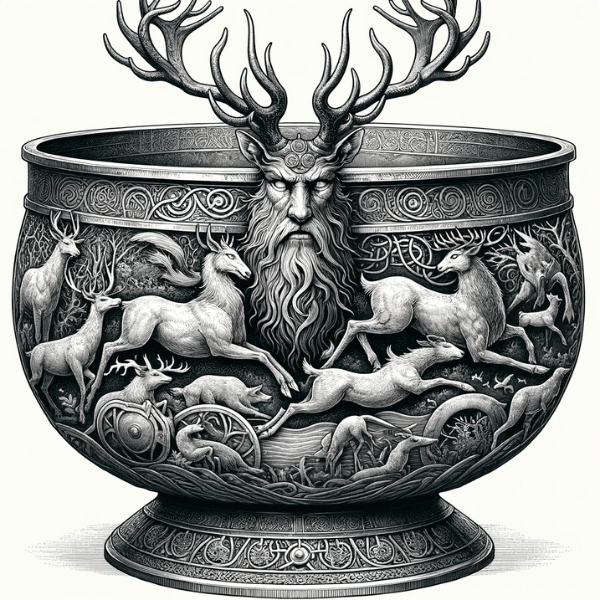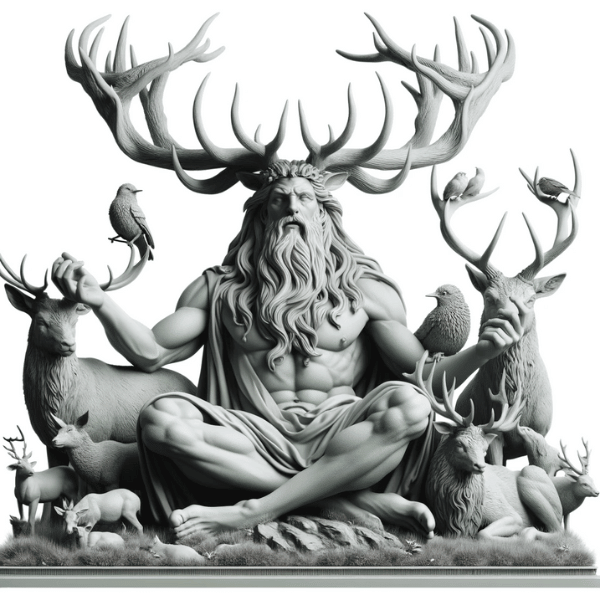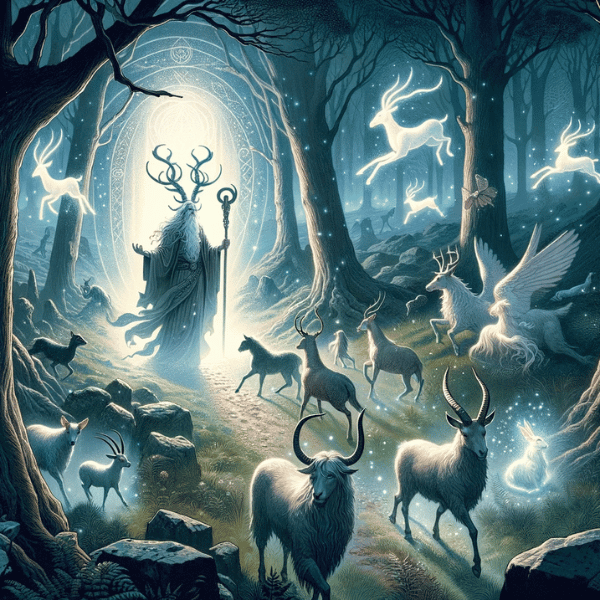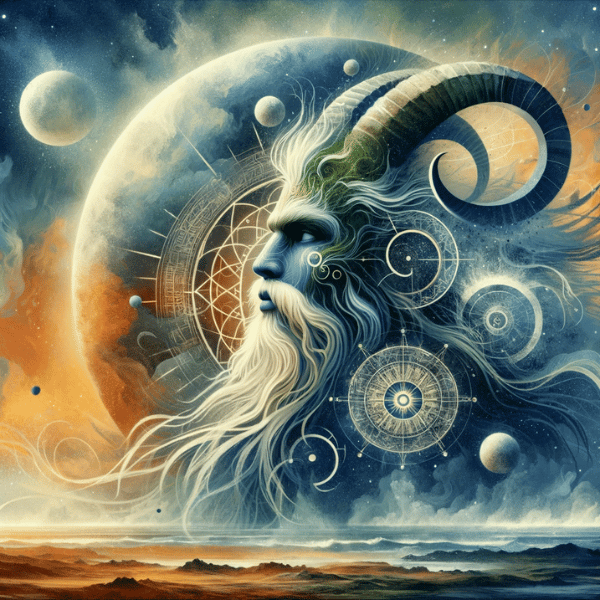Cernunnos, a deity shrouded in mystery and reverence, stands as a pivotal figure in Celtic mythology. Often depicted with stag antlers, he embodies the wild, untamed essence of nature and is thought to preside over wealth, fertility, and the underworld. This article aims to delve into a comprehensive, accurate, and insightful analysis of Cernunnos, piecing together his significance through historical and archaeological evidence. We will explore his origins, symbolism, and the impact he has had on both ancient and modern cultures. By examining artifacts, ancient texts, and scholarly interpretations, this piece endeavors to illuminate the rich tapestry of lore surrounding this enigmatic Celtic god, offering a detailed exploration for enthusiasts and scholars alike.
| Attribute | Cernunnos Information |
|---|---|
| Origin | Celtic Mythology |
| Deity Type | God of Nature, Fertility, and the Wild |
| Role | God associated with nature, animals, fertility, and the wilderness |
| Horned God | Often depicted as a horned deity, symbolizing the vitality of the natural world |
| Cultural Impact | Revered as a symbol of the untamed forces of nature and the cycle of life |
| Depictions | Featured in Celtic art, particularly on the Gundestrup Cauldron and other artifacts |
1. Historical Context and Origins of Cernunnos
Tracing the Roots
The enigma of Cernunnos takes us deep into the heart of Celtic culture, with his roots traceable to the Iron Age. One of the earliest depictions of this antlered deity is found on the Gundestrup Cauldron, a silver vessel thought to be crafted between 200 BCE and 300 CE. This artifact, unearthed in Denmark, portrays a figure with stag antlers, sitting cross-legged, surrounded by animals—a portrayal strongly resonant with Cernunnos. Moreover, inscriptions and reliefs from Roman-era Gaul further substantiate his presence. These artifacts not only depict him but occasionally bear the inscription ‘Cernunnos’, solidifying his identity. These historical and archaeological findings offer tangible evidence of his veneration and provide a foundation for understanding his role in ancient Celtic belief systems.

The Cultural and Spiritual Influence
Cernunnos was more than a mythical figure; he was an integral part of daily life and spirituality in ancient Celtic societies. His representation as a horned deity is often interpreted as a symbol of natural cycles, fertility, and abundance. In a culture deeply connected with nature, Cernunnos held a position of reverence, perhaps even viewed as a guardian or guide between the physical world and the spiritual realm. Academic studies suggest that his worship was widespread, transcending geographical boundaries within the Celtic world. Experts in Celtic history and spirituality emphasize his role not just as a deity of material wealth but also as a symbol of ecological balance and harmony. This multifaceted significance highlights the depth and complexity of Cernunnos’ role in ancient Celtic culture, underlining his enduring legacy in the annals of mythology.
2. Iconography and Symbolism of Cernunnos
The Iconic Visage of Cernunnos
The physical depiction of Cernunnos is rich in symbolism and instantly recognizable. Central to his imagery are the majestic stag antlers, often large and elaborate, crowning his head. This distinct feature sets him apart and connects him to the natural world, particularly the forest and its creatures. Another common element is his seated posture, usually depicted in a cross-legged position, reminiscent of a meditative or shamanic figure. This pose suggests a deep connection with the earth and an aura of wisdom. He is frequently accompanied by various animals, notably the serpent with ram-headed horns and other creatures of the forest. These iconographic elements are not just artistic expressions; they are windows into the essence and attributes of this Celtic deity.

Deciphering the Symbolism
Cernunnos’ symbolism is rich and multi-layered. His antlers, associated with deer, signify regeneration and the cyclical nature of life. They reflect the changing seasons and the cyclical shedding and regrowth of deer antlers. The serpent, often in his grasp, symbolizes rebirth and transformation, shedding skin for renewal. Cernunnos’ link to the underworld, represented with animals and in a position of power, hints at his connection to knowledge. His iconography blends human and animal attributes, underscoring Celtic belief in the interconnectedness of all life. Cernunnos embodies nature, fertility, wealth, and the cycle of life and death, portraying a deity intricately woven into the natural and spiritual realms.
3. Myths and Legends Surrounding Cernunnos
The Stories of Cernunnos in Celtic Lore
Despite Cernunnos being a prominent figure in Celtic mythology, the details of myths and legends specifically about him are sparse, largely due to the oral nature of Celtic storytelling and the limited written records. However, the essence of his character can be gleaned from the roles he plays in various tales. In some narratives, he appears as a guide, leading souls to the afterlife, akin to a psychopomp. His depiction on the Gundestrup Cauldron aligns with this role, as he is surrounded by animals, symbolizing his dominion over life and death. Other stories attribute to him a role as a god of fertility and wealth, with people often invoking him for bountiful harvests and prosperity. These tales, though fragmented, offer a glimpse into the ancient Celtic worldview, where deities like Cernunnos were integral to understanding the mysteries of life and nature.

A Cross-Cultural Perspective
Cernunnos’ attributes bear striking similarities to deities in other ancient cultures. For instance, the Greek god Pan and the Roman deity Faunus also share connections with nature, animals, and fertility. Like Cernunnos, Pan is often depicted with horns and is associated with the wild, pastoral, and untamed aspects of nature. Similarly, Faunus, the Roman equivalent of Pan, is a god of forests, fields, and fertility. Experts in comparative mythology suggest these similarities are not mere coincidences but reflect a common archetypal theme in ancient mythologies: the horned god as a symbol of nature’s power and mystery. This cross-cultural analysis not only highlights the shared human experience in perceiving and venerating the natural world but also underscores the unique position of Cernunnos within this universal narrative, embodying a distinct Celtic interpretation of nature’s cycles and mysteries.
4. The Enduring Legacy of Cernunnos in Modern Culture
Cernunnos in Contemporary Creative Expressions
The influence of Cernunnos extends far beyond ancient times, permeating various facets of modern culture. In literature, his enigmatic persona has inspired numerous works, where he often symbolizes a connection to nature and ancient wisdom. For example, in the realm of fantasy literature, characters resembling Cernunnos are depicted as wise, nature-bound beings. In art, contemporary interpretations of Cernunnos blend historical iconography with modern artistic styles, portraying him as both an ancient deity and a symbol of current environmental and spiritual concerns. Interviews with modern artists and writers reveal a deep fascination with Cernunnos’ symbolism, viewing him as a bridge between the ancient world and contemporary ecological awareness. These creative expressions not only keep the myth of Cernunnos alive but also adapt his imagery to resonate with current societal themes.

Cernunnos in Contemporary Paganism and Spirituality
In modern pagan and spiritual practices, Cernunnos occupies a significant place. He is often revered in neo-pagan traditions like Wicca and Druidry, embodying the masculine aspect of nature and spirituality. Practitioners view him as a symbol of fertility, life cycles, and ecological consciousness. Rituals and ceremonies invoking Cernunnos frequently focus on celebrating natural cycles, such as the changing seasons and agricultural milestones. His representation in these practices is a blend of historical understanding and modern spiritual interpretations. This resurgence of interest in Cernunnos highlights a broader trend of reconnecting with ancient deities in a contemporary context, where the focus is not only on historical accuracy but also on the relevance of these deities to modern spiritual and ecological concerns. In presenting this information, it is crucial to maintain factual accuracy and respect for these practices, acknowledging their significance in the lives of contemporary followers.
5. Conclusion
In our exploration of Cernunnos, we’ve traversed from his ancient roots in Celtic mythology to his enduring presence in modern culture. Unveiling his historical and archaeological origins, we’ve gained insight into his significance as a deity of nature, fertility, and the underworld. Through the lens of iconography and symbolism, we’ve decoded the deep-seated meanings behind his antlered visage, enriching our understanding of Celtic spirituality. The comparative mythology section illuminated his parallels with other ancient deities, underscoring universal themes across cultures. Finally, observing his revival in contemporary art, literature, and pagan practices highlighted his timeless relevance and the ongoing fascination with ancient wisdom. This article has contributed a nuanced and comprehensive perspective on Cernunnos, enriching our appreciation of his multifaceted legacy and enduring influence across time and cultures.
